Miasma
The masks worn by plague doctors are some of the eeriest historical artefacts in existence, but their horrifying design was actually based on a scientific theory which was commonly accepted during the height of the Bubonic Plague, which wiped out around one third of all Europeans during the 14th century.


According to this theory, illnesses were caused by vapors in the air, which scientists referred to as “miasma.” This is where those freaky beaked masks come in. Plague doctors would stuff them full of fragrant herbs, believing that this would prevent them from breathing in the miasma which spread the lethal disease.
Milk blood transfusions
By the late 19th century, scientists had figured out that blood was made up of both red and white cells. Their understanding of blood in general, however, was severely limited, as evidenced by the fact that they believed milk could be used as a substitute in transfusions.


It was theorized that the fatty molecules in milk would be converted into white blood cells by the body, which - to put it mildly - is insane. Milk transfusions were carried out a number of times, and they almost always proved fatal, eventually leading scientists to reevaluate their assumptions about blood.
Ulcers caused by stress
Up until 1984, it was commonly accepted by doctors and scientists that stomach ulcers were the result of stress, and treatment usually revolved around making lifestyle changes to increase tranquility. This theory was single-handedly disproved by Australian gastroenterologist Barry Marshall.


Marshall theorized that ulcers were actually caused by a strain of bacteria called Helicobacter pylori. Although Marshall proved his hypothesis right by experimenting on himself, the idea that stress causes ulcers has become so deeply ingrained that it’s still commonly believed by those outside the scientific community.
Telegony
During the height of Ancient Greek civilization, the brightest minds of the day all believed in a theory known as telegony. According to this theory, a woman’s child would inherit traits from all of her sexual partners, and it was believed that this explained any health conditions a child had.


Telegony was also the reason kings were forbidden from marrying women who had previously been sexually active, as it was believed that this would corrupt the purity of the royal bloodline. Of course, this theory is nonsense, and no doubt led to a lot of women being wrongfully persecuted for adultery.
Gland transplants
In one of the more insane episodes from modern medical history, in 1919 a scientist tried to transplant the interstitial gland from a chimpanzee into an 80-year-old man, in an attempt to restore his youthful vigor and help him to live longer.
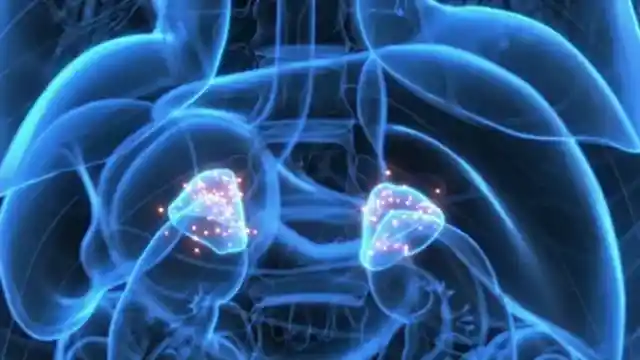

Dr. Serge Voronoff - the scientist behind the experimental procedure - stated that he believed the gland, which contains testicular leydig cells, is “vital to the male organism,” and thus would restore his patient’s manhood. It should go without saying that the theory had no evidence to back it up, and the treatment was a resounding failure.
Bicycle face


According to medical experts, riding a bicycle was inherently bad for women, leading to dark bags under the eyes, an “expression of weariness” and - in extreme cases - physical deformities. While the condition was blatantly bogus, a lot of otherwise intelligent people fell for it.
Tooth worms
Toothache is the result of inflammation in the innermost layer of the tooth (referred to as the pulp), and it can have a variety of causes, ranging from gum disease to a cavity. Before modern dentists discovered this, it was believed that tooth pain was the result of “tooth worms,” which infiltrated teeth and caused pain when they moved.


This theory wasn’t entirely based on speculation, as scientists observed that the nerve in the root of a tooth does indeed look a bit like a worm. The first mention of tooth worms is found in writings dating back to 5,000 BC, and some scientists still believed in their existence into the early 20th century.
Chloroform for asthma
Although it’s often depicted as a tool used by kidnappers in TV shows and films, chloroform actually takes quite a while to render someone unconscious, and you can breathe it for a few minutes before passing out. That doesn't mean it's good to inhale, however.


Nevertheless, during the 19th century, scientists and doctors believed chloroform could be used to treat asthma, and they prescribed it to patients for home use. Unfortunately, it’s possible to overdose on chloroform, and it wasn’t long before patients were accidentally killing themselves while trying to stop an asthma attack.
Preformationism
Before the invention of powerful microscopes which were capable of revealing what sperm and egg cells looked like, it was believed that each sperm contained a tiny, fully formed human which gradually grew inside the womb.


This idea is known as preformationism and - while it’s easy to laugh at now - it once seemed like common sense to scientists. The theory’s origins can be traced back to Pythagoras, who believed that the sperm cell contained all the essential parts of a person, while the egg provided an environment for them to grow.
Treating rabies with raw veal
Rabies is officially the deadliest virus in existence, with a mortality rate of 99.9 percent. Unless you receive treatment within 24 hours of exposure, you can almost guarantee that the disease will claim your life in one of the most agonizing processes imaginable. Rabies was relatively common during the Roman Empire, and Pliny the Elder thought he’d come up with a cure.


According to Pliny, anyone bitten by a rabid animal should immediately have the wound covered in raw veal, after which they should drink badger dung boiled in wine. Needless to say, all this would have achieved is making the last lucid moments of the victim even more unpleasant.
Deadly baby sleeping syrups
Soothing syrups for babies were available over the counter throughout the 1800s, and they were, by all accounts, incredibly effective. The reason for their efficacy? High amounts of alcohol and opiates. Unsurprisingly, giving babies now-illicit substances does tend to reduce crying, but it also comes with a number of side effects, such as sudden death.


By the turn of the century, these products were rightfully being labelled as “baby killers,” but it’s still absolutely astonishing that otherwise intelligent people thought it was ok to sedate infants for the best part of 100 years. Nowadays, we have more civilised ways of giving parents some precious peace and quiet.
Dead whales to treat rheumatoid arthritis
Towards the tail-end of the 19th century, a hotel in Austria started offering an incredibly unusual treatment for the symptoms of rheumatoid arthritis. The treatment was based on the theory - which was genuinely believed by some respected scientists - that sufferers of the condition could find relief by lying inside the carcass of a whale.


Patrons who wished to take advantage of this service would wait at the hotel - which was near the shore - until a deceased whale was spotted at sea. Then, they would be rowed to the floating carcass, a hole would be cut into its stomach and they would climb inside, often remaining there for up to two hours.
Maternal impression
Right up until the early 1900s, the scientific community believed a theory known as “maternal impression.” According to this theory, anything a woman experienced while pregnant would physically alter her fetus. For example, it was believed that a woman had a higher chance of giving birth to a blind baby if she saw a blind person during her pregnancy.


Scientists even suggested that Joseph Merrick - a sufferer of neurofibromatosis known as “the elephant man” - had been born with his condition because his mother had been frightened by an elephant after he’d been conceived. Thankfully, this theory has now been relegated to the scientific fringes.
Mercury is the elixir of life
Soon after becoming Emperor of China in 221 BC, Qin Shi Huang assembled a team of the brightest scientific minds in the land and assigned them with creating an elixir of immortality. After several years of research, they presented the emperor with a potion they were convinced would keep him alive forever.


Its main ingredient? Mercury, of course! The famously toxic element had apparently impressed the scientists with its strange, liquid-like qualities, and Huang consumed it in prodigious quantities. Unsurprisingly, he died at 45, and the toxic elixir never gained mainstream appeal.
Trepanning
As anyone who’s ever had a headache will know, it can often feel like there is pressure building up inside your skull. Before modern medical technology uncovered the true causes of headaches, scientists theorized that this was literally what was happening, and they devised a treatment to relieve the pressure.
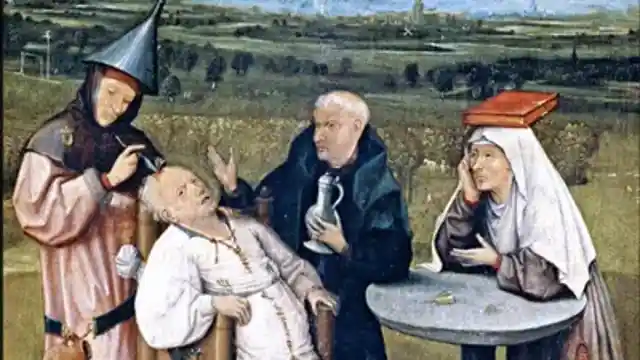
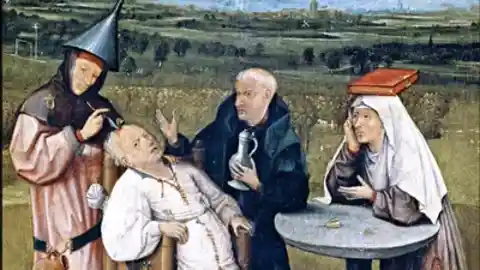
That treatment was trepanning, and it involved drilling a hole in the skulls of headache sufferers. While most patients survived the procedure, it’s safe to assume their headache got a lot worse, and those that did find relief had to immediately deal with a bunch more symptoms instead.
Spontaneous generation
By the 17th century, scientists had figured out that finding maggots on your food was bad news, and that spoiled meat could make you seriously ill. What they didn’t understand, however, was how said maggots came to be in their dinner in the first place.


Making an incorrect - but understandable - logical leap, they concluded that maggots must spontaneously generate out of rotting food. While the theory was obviously wrong, it resulted in people eating less gone-off food, so it still led to a positive outcome.
Smoking is healthy
Up until the mid 60s, it was widely believed that smoking was not only harmless, but actively good for you. While tobacco companies were responsible for suppressing evidence to the contrary for a number of decades, there was a time when everyone genuinely thought smoking was a healthy habit.


It was believed to have a range of benefits, including improving lung function and reduced the risk of asthma (in reality, smoking achieves the exact opposite). Doctors even appeared in commercials for popular brands, and recommended smoking to their patients.
Humoral theory
During the third century BC, the Greek physician Hippocrates put forwards his theory that human bodies contained four “humors,” namely blood, yellow bile, black bile and phlegm. Hippocrates believed that all ailments were the result of imbalances in the humors, and that all treatments should be aimed at restoring balance.


For example, if a patient’s condition was determined to be caused by excess blood, bloodletting would be employed as a treatment. Humoral theory was hugely influential in medicine and science, and it wouldn’t be definitively disproved until the 19th century.
Adrenal fatigue
In 1999, chiropractor James Wilson coined the term “adrenal fatigue,” which he claimed was a condition caused by being stressed out for too long. According to Wilson, it’s possible for the adrenal glands to become exhausted, resulting in insufficient hormone output and a range of symptoms.


The most common symptoms Wilson referred to were fatigue, weight loss and low blood pressure. While there are a number of genuine medical conditions which cause adrenal gland dysfunction - and while chronically elevated levels of stress can lead to negative health outcomes - the theory of adrenal fatigue has been dismissed by scientists.
Wandering wombs
Since at least Ancient Egyptian times, scientists believed that women’s wombs could move around inside their bodies, apparently of their own accord. They also believed that hysteria was the result of the womb moving to the incorrect part of the body (“hysteria” is derived from “hystericus,” a Latin word meaning “of the womb”).


Scientists theorized that wombs were attracted and repelled by different smells, so they’d treat mental health conditions by placing fragrant substances near the vagina in an attempt to coax the womb back into the correct position. Unbelievably, this turned out not to be based in reality.
Katzenklavier
In the 18th century, German physician Johann Christian Reil came up with a horrifying machine for treating attentional disorders. Reil’s device - which he dubbed the “Katzenklavier” - consisted of nine cats, placed in a row and tethered in place. Above each cat’s tail would be a stick with a nail attached to it, and these sticks could be operated with a keyboard, much like a piano.


Reil theorized that - by playing this infernal contraption in front of someone who was struggling to pay attention - he could cure them of their disorder. Fortunately, Reil never actually built a Katzenklavier, and his insanity remained confined to the pages of his notebooks.
Powder of sympathy
Sir Kenneth Digby was regarded by his contemporaries as one of the smartest minds of the 17th century, so when he gave a two hour speech about a new treatment he’d devised - which he named the “powder of sympathy” - many were convinced.


The treatment revolved around applying treatment to weapons that had caused injuries, in the belief that this would heal the injuries themselves. Digby based his ideas on the principle of “sympathetic magic” - which had been explained to him by a Carmelite monk - and proponents of the theory included Thomas Sydenham and John Locke.
Phrenology
According to phrenology, the shape of a person’s head dictates various aspects of their personality. Proponents of the theory believed that the brain was split into 27 different sections, each responsible for a different trait. By taking precise measurements of a person’s skull, phrenologists thought they could tell which sections of their brain were more developed
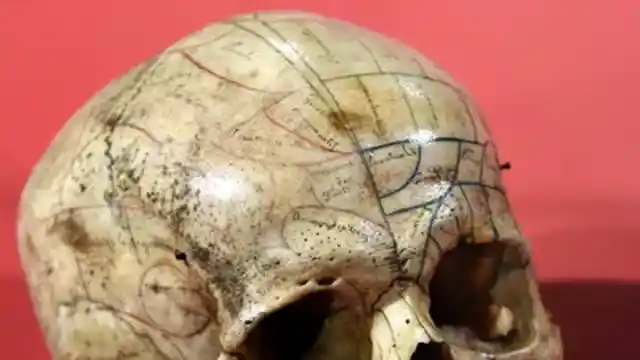

Popularized during the 1800s, phrenology was used to justify slavery, as it purported to show that Africans had different skull shapes which proved they were less advanced. Thankfully, like many theories based in eugenics, phrenology has very little modern credibility.
Cold weather makes you sick
The theory that exposure to cold temperatures makes you sick is so prevalent there’s a decent chance you yourself believe it. However, while rates of cold and flu do increase during cold weather, it’s not the drop in temperature that causes sickness.


Rather, it’s because people spend more time indoors, which means they’re spending more time in close proximity to one another and thus more likely to transfer viruses. The same effect can be observed in hot countries during heatwaves, when people spend more time inside air-conditioned houses.
Bloodletting
Bloodletting was employed as a common - and completely useless - medical treatment throughout much of human history. Some of the smartest people to have ever lived wholeheartedly endorsed relieving people of their blood.
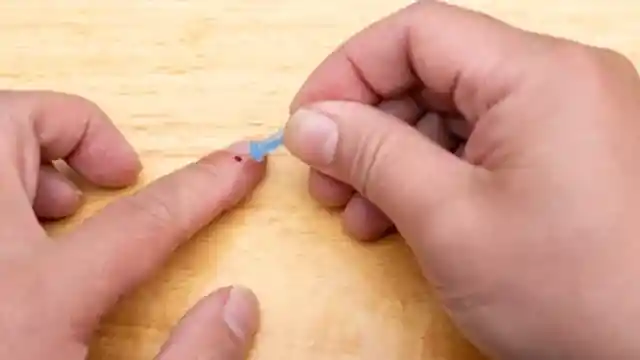

Bloodletting was prescribed liberally by historical medical practitioners, in order to treat ailments ranging from headaches to stomach bugs. The theory behind the practice was that blood could stagnate in various parts of the body, and that bleeding was required to get it moving again.
Women can’t get pregnant on their periods
For a long time, it was widely believed that a woman couldn’t get pregnant if she had sex on her period. While the odds are low, however, it is actually theoretically possible. This is because, while ovulation usually takes place around the 14th day of a woman’s cycle, it doesn't always.


In rare cases, ovulation can occur as little as four days after the end of a period. Since sperm can survive for up to a week after ejaculation, pregnancy can occur even if sex was had on the first day of period. Meaning it's always better to be safe than sorry.
Refrigerator mother theory
One of the most bizarrely named theories in medical history, refrigerator mother theory claims that the cause of autism is a lack of maternal affection during infancy. The theory was first put forwards in 1943 by Leo Kanner, a psychologist who observed what he perceived as a lack of warmth from the mothers of autistic children.


Kanner connected some dots that didn’t exist, and published his thoughts in a journal. The idea quickly caught on, and it remained influential up until the 70s, creating a deeply unfair stigma for mothers of autistic children. Fortunately, further studies and discoveries conclusively showed the claims made by refrigerator mother theory were baseless.
Men are more likely to suffer from heart disease
It has often been claimed - including by leading figures in the medical field - that men are more likely to be affected by heart disease than women. A number of theories have been put forwards to explain this, ranging from genetic differences between genders to lifestyle factors.


In reality though, no such discrepancy exists. Heart disease is the number one killer of both men and women in the United States, and women are actually more likely to die if they suffer a heart attack, in part because symptoms present differently and so are less likely to be recognised as an emergency.
Animal magnetism
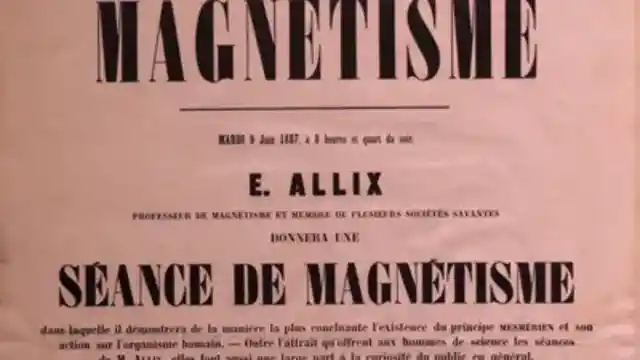
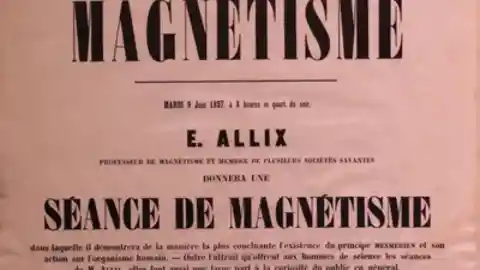
In fact, practitioners known as “magnetizers” soon popped up, claiming they could manipulate people’s vital forces to cure ailments. Hundreds of books were written about animal magnetism, but after 1925 the theory began to fall out of fashion, largely due to advances in medical science that undermined its central claims.
Faculty psychology
Faculty psychology is the theory that the mind is separated into different sections, each responsible for a different aspect of cognition. The theory was incredibly influential in psychology for decades, and for a long time it was essentially taken as fact.
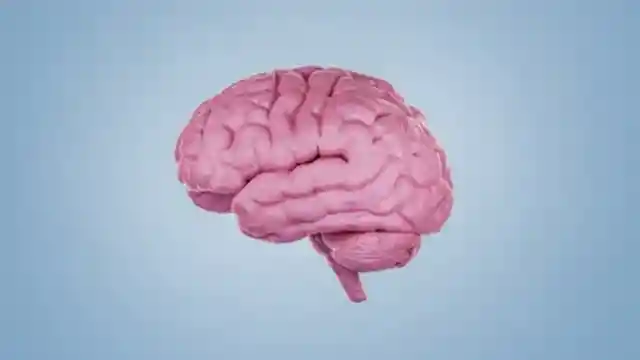
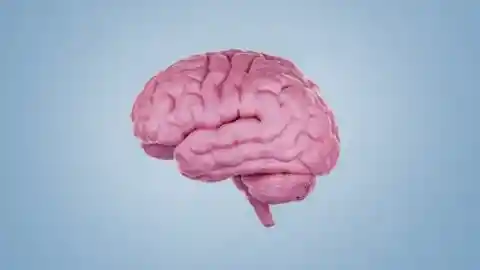
Recent advances in neuroimaging technology have undermined the theory, however, by conclusively showing that there is significant overlap between brain regions when it comes to different tasks. The brain also appears capable reorganizing itself if one part gets damaged, reallocating tasks to new regions.
Cupping
Closely related to bloodletting, cupping is a pseudoscientific medical practice that involves using the suction from heated cups to draw blood to the surface of the skin. Although it was once widely popular throughout many parts of the world, these days cupping is mostly performed in Asia.


Proponents of cupping have claimed that it can treat a wide variety of conditions, including back pain, high blood pressure, menstrual cramps and even infertility. Scientific studies have consistently failed to demonstrate any positive effects from the practice, though research continues.
Radiation is good for you
During the early 1900s, scientists believed that radiation had healing properties, leading to a booming market in radioactive health products. These products, which included pendants, blankets, cosmetics and - most alarmingly - drinks, were generally made using the glowing, toxic radium.


Eventually, suspicions started to grow that radiation might be dangerous, after factory workers responsible for painting watches with radium-based paint started suffering horrific health effects. Although the radium industry fought hard to cover up the truth, the public eventually learned quite how dangerous their radioactive products were.
Zymotic disease
Throughout the 19th century, doctors and scientists believed that most infectious diseases - particularly those which presented as fevers - were caused by a single organism, which they referred to as a “zyme.” Zymotic disease was a term used for all illnesses believed to be caused by this organism.
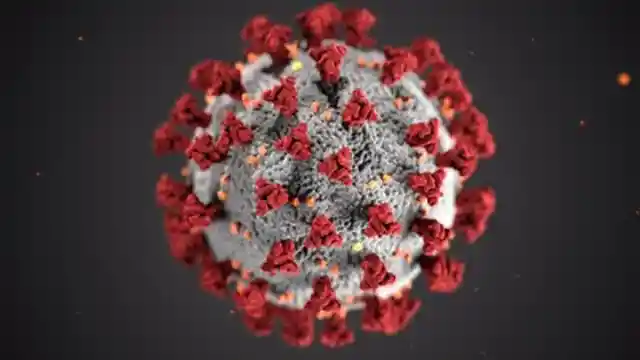
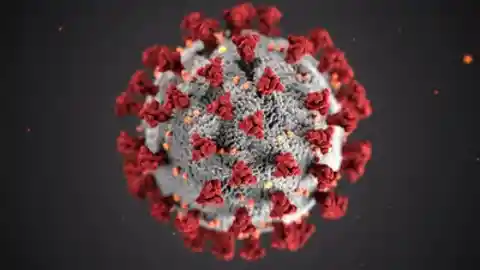
Illnesses thought to be caused by zymes included smallpox, scarlet fever, whooping cough and typhoid. By the 20th century, however, scientists had discovered that different illnesses were caused by different pathogens, disproving the zymotic disease theory completely. As a result, it quickly fell out of favour.
Virino theory
In much the same way that the zymotic disease theory explained infectious diseases with the existence of a single, harmful organism, the virino theory claimed that degenerative diseases were caused by an infectious particle. This particle - which scientists dubbed the “virino particle” - was said to consist of nucleic acids with a protective shell of proteins.


The theory was undermined when it was discovered that scrapie - a degenerative disease affecting livestock - was caused by prions, rather than the virino particle. This sowed the first seeds of doubt, and the theory soon fell out of fashion.
Superfoods
While it’s long been understood that certain foods are healthier than others, the idea of superfoods is relatively recent. The word “superfood” was first used in 1918, but it wasn’t until 1991 - when blueberries started getting a lot of attention for their high levels of purportedly healthy compounds - that the the term truly caught on.


Hundreds of ingredient have since been labelled superfoods, and for a time top nutritionists were advising people to base their diets off these foods. In recent years, scientists have poured cold water on the notion of superfoods, instead recommending that people consume varied diets.
Autistic enterocolitis
In 1998, British doctor Andrew Wakefield sent shockwaves through the medical establishment when he published a study in The Lancet, claiming he had detected a new condition linked to autism. Wakefield dubbed this condition “autistic enterocolitis,” and - even more shockingly - he claimed it was caused by the MMR vaccine.


While many doctors took the study incredibly seriously, subsequent inquiries discovered that Wakefield had fabricated his results, and he was stripped of his medical license. Many scientists considerer Wakefield - who continues to make millions peddling conspiracy theories - to be responsible for the modern anti-vax movement.
Moral insanity
In 1835, physician James Cowles Prichard coined the term “moral insanity” in his book Treatise on Insanity and Other Disorders Affecting the Mind. According to Prichard’s theory, a number of mental health conditions were all actually caused by a single, overarching disorder.


Symptoms that Prichard believed could be explained by moral insanity included delusions, hallucinations, mood swings and intellectual impairments. As modern psychology progressed, it was soon discovered that all of these were actually caused by separate conditions, and one that had very little to do with a person's personality.
Lobotomies
By the early 20th century, scientists had correctly identified that mental health conditions originated in the brain. Instead of trying to treat the causes of the disorders, however, they instead decided that the most logical step was to drive a spike into the frontal lobe of people suffering from psychiatric problems.
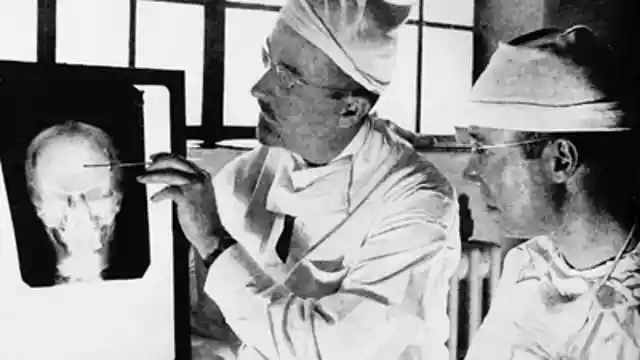
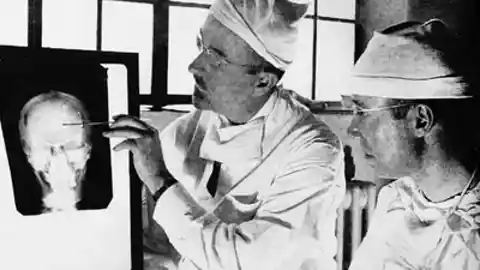
Despite the fact that this resulted in radical changes to personality and intellect, the scientists claimed that the procedure was effective. In 1949, a Portuguese physician was even awarded a Nobel for his supposedly pioneering use of lobotomies. The last lobotomy performed in the United States occurred in 1967.
Fat is worse than sugar
During the 1960s, studies started finding links between excess sugar consumption and heart disease. In response, the sugar industry began financing alternate studies into the negative health effects of fat. These studies convinced top experts, and the dietary advice issued by the US government soon revolved around minimizing fat consumption.


This led to a huge market for fat free products, and - since fat provides flavor - the makers of these products compensated by adding either sugar or artificial sweeteners, both of which are now considered far more harmful than fat.
Oil pulling
An ancient Ayurvedic treatment, oil pulling involves swishing oil - usually either coconut or sesame - around the mouth for up to 20 minutes. Proponents of oil pulling claim that it can whiten teeth, prevent cavities and improve bad breath. The theory is that oil pulling gathers up all the bacteria in the mouth, allowing it to be spat out, and some have even claimed that it can reverse tooth decay.


Oil pulling has experienced a resurgence in popularity in the last couple of decades, with some dentists even recommending the practice, but studies haven’t found any benefits. With that said, research continues, and so its benefits may yet be uncovered!